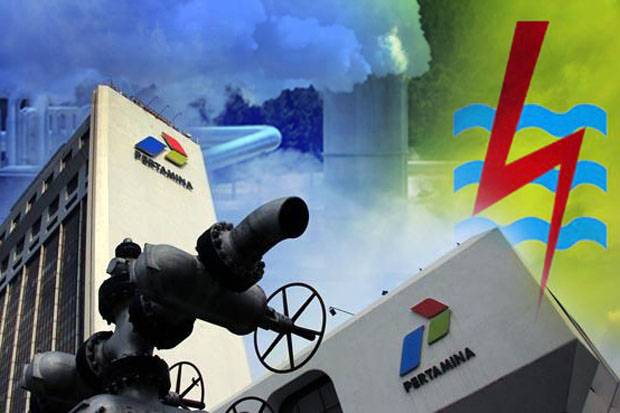The Indonesian government has announced a major shift in how it pays compensation for energy subsidies and obligations to key state-owned enterprises. Under the new energy compensation scheme, payments to the state energy companies, specifically PT PLN (Persero) (PLN) and PT Pertamina (Persero) (Pertamina), will be accelerated and structured to improve their liquidity and financial stability. This article covers what the scheme is, why it matters, how it will impact the firms and the wider energy sector, and what risks or implementation challenges remain.
What the Energy Compensation Scheme Involves
At its core, the new energy compensation scheme changes the timing and proportion of payments that the government makes to PLN and Pertamina for their obligations under public service obligation (PSO) and other energy subsidies/compensations. Previously, payments might be made quarterly or in large lumps, which created cash-flow pressures for the companies. Under the new approach, around 70 % of the amount will be paid monthly, with the remaining 30 % paid after the eighth month once adjustments are calculated.
This shift means PLN and Pertamina can receive more predictable, frequent cash inflows, allowing them to reduce short-term financing costs, manage working capital better, and invest or operate with more assurance. Government authorities have indicated that the funds are available in the budget and that procedural barriers for disbursement have been reduced.
Why the Scheme Matters for PLN, Pertamina and the Energy Sector
The liquidity of PLN and Pertamina is critical not only for the companies themselves but for Indonesia’s broader energy security and subsidy regime. Both firms have large obligations: PLN for electricity generation, transmission and subsidies; Pertamina for fuel supply, refining, and subsidy logistics. Delays in compensation or cash transfers can lead to higher debt, deferred maintenance, service disruptions or increased reliance on external financing.
By adopting the energy compensation scheme, the government signals stronger commitment to ensure state energy firms maintain healthier finances. Better liquidity for PLN means fewer load shedding risks, more stable electricity supply and possibly improved investment in grid or renewable infrastructure. For Pertamina, the improved flow of funds helps in fuel supply logistics, avoiding disruptions and stabilising downstream operations.
Moreover, the scheme may also reduce financing costs: if the companies have less short-term debt or need fewer bridge loans, their interest burdens fall. For investors, this improved clarity and predictability can make state energy firms more attractive, potentially unlocking further private investment or partner collaborations.
What Are the Implementation Challenges and Risks?
Despite its promise, the energy compensation scheme carries several implementation and structural risks. First, the monthly payment model requires tight budgeting, verification and auditing by the government to ensure amounts are accurate and payments timely. Any delays or disputes in calculating the 30 % residual payment could reintroduce cash-flow uncertainty.
Second, operational transparency is crucial. For PLN and Pertamina to benefit fully, they must ensure that funds are used efficiently, avoid re-emergence of hidden liabilities and maintain strong governance. If the firms continue to incur high fixed costs, inefficiencies or cost overruns, better payment cadence alone will not solve structural issues.
Third, the scheme depends on the broader subsidy framework remaining stable. If energy prices (fuel or electricity) shift sharply, or if subsidy burdens grow due to external shocks, the government may face fiscal pressures, which could delay payments or force budget cuts. That in turn could undermine the intended liquidity benefit of the scheme.
Finally, while monthly payments improve predictability, they also require stronger internal cash-management capabilities. PLN and Pertamina must adapt their treasury operations, forecasting models and internal controls to capitalize on the improved cash flow without increasing risk exposure.
What This Means for Stakeholders and the Future
For policymakers, the energy compensation scheme offers a tool for strengthening state energy firms and ensuring reliable infrastructure delivery. It may also help improve investor confidence in the energy sector, potentially enabling more growth in renewable energy, modernisation or corporatisation of assets.
For PLN and Pertamina, the scheme is a chance to reset. With better liquidity, they can reduce short-term debt, allocate funds to maintenance or capacity expansion, and improve service levels. But the true benefit will come only if internal reforms accompany the payment changes. Efficiency, cost control, transparency and performance metrics must improve.
For consumers, a financially stronger PLN means more reliable electricity and potentially fewer disruptions; a healthier Pertamina means more stable fuel supply and potentially fewer indirect cost pass-throughs from subsidy burdens.
Conclusion
The introduction of a new energy compensation scheme in Indonesia – centred on monthly payments of 70 % followed by adjustment payments – marks a significant reform in how the government supports its state energy firms. If implemented with discipline, it can enhance the liquidity of PLN and Pertamina, reduce fiscal stress, improve energy supply reliability and free up capacity for investment in infrastructure and renewables. However, the benefits are not automatic. Without accompanying governance and operational reforms, the improved payment timing may only delay existing challenges. The success of this policy will be judged in how well the companies adapt, how transparently funds are managed, and how resilient the subsidy framework proves to be in changing global energy markets.
Read More






 Saturday, 13-12-25
Saturday, 13-12-25







